The Ultimate Guide to Oval Cut Diamonds
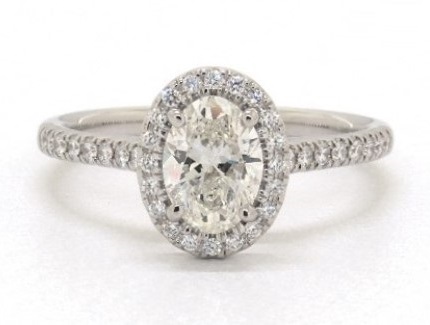
A gorgeous halo engagement ring with an oval cut diamond.
In a market that is overshadowed by the influx of round diamonds, the oval shape offers a refreshing alternative to people who want to buck the usual trends. With its elongated shape, ovals exuberate an air of elegance that no other shapes possess.
One of the key advantages of selecting an oval diamond is that it faces up larger than other diamonds with similar carat sizes. Also, it can flatter the fingers by making them appear longer and slimmer (perfect for women with smaller sized hands or shorter fingers).
In this comprehensive guide, I’ll walk you through the complete process of selecting a beautiful oval cut diamond and show you the things you need to keep an eye on.
Here is a list of topics we will be covering:
- Ideal Proportions For Oval Cut Brilliant Diamonds
- Recommended Clarity And Color Ratings for Oval Diamonds
- Length to Width Ratios: Ovals Can Exist in Various Forms And Outlines
- How Much Does an Oval Shaped Diamond Cost?
- Examples of Oval Diamonds With Poor Outlines And Shape Appeal
- Bow Tie Effect in Oval Diamonds – Good or Bad?
- Best Oval Cut Engagement Ring Settings And Designs
- Summary – Recap And the Best Places to Buy an Oval Diamond Ring
Ideal Proportions For Oval Cut Brilliant Diamonds
Modern oval diamonds are cut with various types of facetting patterns and this results in ovals with vastly different appearances. In the table below, I’ve compiled a range of the best proportions and traits based on my observations of well cut oval diamonds.
Now, I do want to point out that there isn’t a “magical” set of ideal proportions that would guarantee a great looking oval diamond. You can use it as a guideline to weed out poorly cut stones and increase your probability of finding a diamond with
| Excellent | Very Good | Good | Fair/Poor | |
|---|---|---|---|---|
| Table % | 54% – 58% | 52% – 60% | 51% – 64% | Outside Ranges |
| Depth % | 62% – 66% | 60% – 68% | 56% – 70% | Outside Ranges |
| Polish/Symmetry | Excellent – Very Good | Good | Outside Ranges | |
| Length to Width | 1.30 – 1.35 | 1.25 – 1.29 1.36 – 1.40 |
1.20 – 1.24 1.41 – 1.45 |
Outside Ranges |
| Girdle Thickness | Thin – Slightly Thick | V. Thin – Thick | Outside Ranges | |
| Culet Size | None | Very Small | Small | Outside Ranges |
* Note: The recommended proportions for oval cut diamonds should be used as a reference only. Subjective observations for personal tastes and tangible light performance data like videos or ASET images will take higher precedence.
For an oval diamond to produce maximum brilliance while minimizing the bow tie effect, a depth percentage between 62% – 66% is recommended. Ovals with depths that fall below 60% usually have low pavilion angles which can cause prominent bow-ties to form.
When the diamond is cut to depths of more than 68%, the bow tie effect is reduced significantly. However, the optical performance of the diamond would also be adversely affected. This results in a diamond that is usually dull and dark in appearance.
How Do Well Cut Oval Diamonds Look Like?
As I mentioned earlier, numbers and proportions are only a guideline to help to narrow down your choices. You would require videos and other tangible data like the ASET to help you pick out ovals with great light performance.
To give you some idea of how well cut oval diamonds will look like, check out the following examples from James Allen below. I encourage you to click on the images and interact with the video listings for yourself.
Basically, when I choose oval diamonds, I look at factors like light performance, shape appeal, bowtie and the contrast patterning of the diamond. That’s because cut quality is the most important thing that matters for sparkle.
Recommended Clarity And Color Ratings for Oval Diamonds
Well cut oval diamonds are pretty good at hiding flaws and body color due to the brilliant facetting pattern. This means you save some money by going down on the color and clarity scale.
For practical purposes, I generally recommend a VS2 or SI1 clarity rating to get an eyeclean diamond without compromising on the beauty of the stone. As long as the diamond has no eye visible inclusions, a VS2 diamond can look just as good as a VVS or IF diamond.

There’s a 30% difference in price even though the VS2 diamond is more beautiful in real life!
Evaluating color in oval diamonds is subjective to individual tastes and also dependent on the style of engagement ring you are getting. For people who want an icy white looking diamond, I recommend at least a G or better color.
I’ve compiled a chart to show you how the different GIA colors look like when 1 carat sized ovals are seen in the face up view. If you want to get a white looking diamond and the best value for your money, go for a G color grade.

However, if you are looking for a vintage diamond ring or yellow gold setting, going down to a J or K color would be perfectly fine as the yellow tint enhances the style of the diamond ring.
Length to Width Ratios: Ovals Can Exist in Various Forms And Outlines
Ovals are often termed as “squashed round brilliants” – which takes its name after how a round brilliant diamond would look if it were squashed. In my opinion, the ideal length to width ratio (L/W) of an oval diamond should be ~1.33 as this results in a lovely, traditional outline.
Here’s a chart that shows diamonds with different length-to-width ratios. 
In real life, the outcome of different stones would be determined by how the cutter works with the rough. Depending on where the inclusions are found or how the best yield can be derived from the rough, the l/w ratio will vary from one diamond to another.
I generally avoid anything less than 1.20 as the oval would look like a poorly cut round diamond. Also, I would avoid anything above 1.40 as it would resemble a deformed marquise diamond.
How Much Does an Oval Shaped Diamond Cost?
Compared to round cut diamonds, the prices of oval diamonds are generally 20-30% lower due to a better yield on rough cutting. This means you are able to buy a larger carat size diamond for less money and get a bigger bang for your buck.
Below, I’ve compiled a price comparison chart to show you how much 1ct oval diamonds will cost based on their color/clarity grades.

Price chart comparison of GIA certified 1ct oval shape diamonds.
For a 1 carat size diamond, the prices range somewhere between $3,000 to $8,000. And as you can see from the chart above, the prices would vary depending on the diamond’s qualities.
Now, most people assume that a high color/clarity grade would be required in order for a diamond to sparkle and look brilliant. The truth is far from that as cut quality is the attribute that determines that.
If you are on a budget, it is perfectly fine to shop for diamonds in the lower clarity/color ranges (e.g. H/SI1). As long as the cut quality is top notch, you would still be able to buy a great looking diamond that is very hard to distinguish from a D/IF diamond.
Examples of Oval Diamonds With Poor Outlines And Shape Appeal
Buying fancy cuts based solely on a grading report is a mistake many consumers make at both physical and online stores. And yes, you read that right. In fact, it is much harder to shop for an oval diamond ring at a physical store because of limited selections and high prices.
Below are examples of oval diamonds that aren’t cut properly and sadly, these are the kind of diamonds that are frequently found in the market. And to state the obvious, you want to avoid diamonds like these…
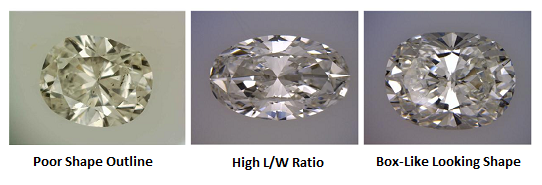
Seriously, do the diamonds look oval to you? They take on an elliptical appearance instead.

The uneven bellies are a result of poor symmetry and look plain awful.
The problem here is that issues with cut quality and a diamond’s appearance don’t show up in a grading report. Even if a GIA certificate indicates Excellent ratings for both Symmetry and Polish, you could still end up with one of the diamonds above!
Buying fancy shapes based solely on a grading report isn’t a wise thing to do. I need to stress the importance of working with a jeweler (e.g. James Allen) who can provide magnified images/videos for your examination. On top of that, I would recommend buying from a business who is able to provide you with tangible light performance information.
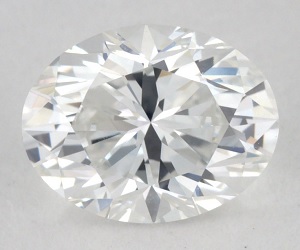
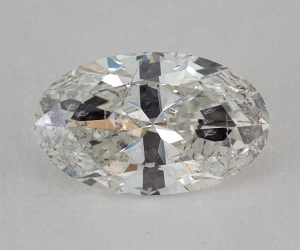
You want to buy brilliant looking stones (left) and avoid the majority of ghastly ones (right).
Bow Tie Effect in Oval Diamonds – Good or Bad?
Due to their faceting structure, most oval diamonds have an intrinsic bowtie effect (dark areas resembling a bow tie) that can be seen from a face up view. This phenomenon is created as a result of pavilion facets that cause light obstruction when a person looks at the diamond.
In general, I find that ovals with shallow depths (less than 58%) tend to have a higher probability of an ugly looking bowtie.
From my grading experience at GIA and interactions with readers, I would tell you that most people dislike seeing dark patches across their diamond. These are 2 examples of “bad” bowties that many people do not like…
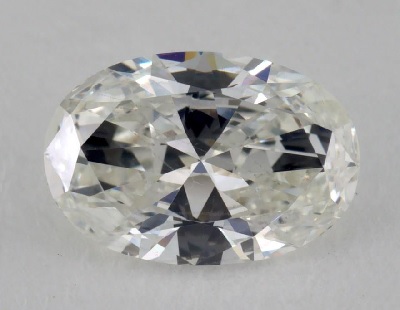
Does this cross-shaped bowtie look good?
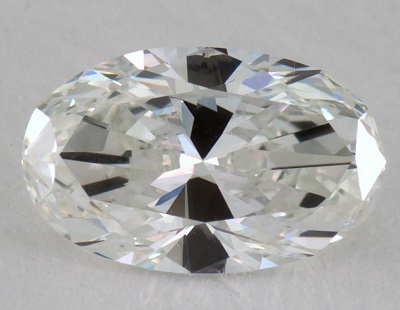
What about this diamond that displays a large bowtie?
Having said so much, you might assume that all bowties are bad. But this isn’t true. Just because an oval diamond has a bowtie doesn’t necessarily mean it is a deal breaker. In fact, a faint bowtie can actually work in your favor as it helps create contrast within the diamond and improves its scintillation patterning.
What you want to avoid are bowties that look huge and remain dark even when your viewing angle of the diamond changes. Severe bowties often create an unbalanced look in the diamond and reduce the brightness of the stone.
But how much is too much? And when is a bowtie acceptable? Well, this is a pretty subjective issue that is entirely up to your own preferences. The answer is to view as many ovals as possible until you get the knack of what you like.
Some people have a higher threshold for a dark looking bowtie because they think it gives the oval diamond a unique flavor. I will show you a couple of examples of bowties which I personally would be OK with.
Best Oval Cut Engagement Ring Settings And Designs
Oval diamonds are pretty versatile and can look great in many types of ring designs. Due to their shape, they are usually set in 4-prong settings while larger stones may require 6 prongs for added security.
In my opinion, the best ring setting designs that complement the oval diamond are those that utilize accent stones to enhance the shape appeal of the oval’s appearance. Check out some of my favorite designs that other readers have previously purchased…
4 prong solitaire rings are classic and cost-efficient designs that offer understated elegance.
This beautiful halo ring enhances the outline of the oval cut diamond and makes it look bigger than it is.
This vintage style 3-stone ring features 2 tapered baguettes flanking each side of the oval diamond.
This stunning split shank diamond ring accentuates the center stone and gives off an elegant vibe.
A lively French pave set diamond ring with accent stones on the shanks leading to the center stone.
Summary – Recap And the Best Places to Buy an Oval Diamond Ring
To recap, here are my recommended guidelines for buying an oval cut diamond:
Table: 54% to 58%
Depth: 62% to 66%
Polish/Symmetry: Very Good or Excellent
Length to Width Ratio: Within a range of 1.30 to 1.35
Color: G or better
Clarity: SI1 or better
Bear in mind that the proportions are just a guideline and color/clarity ratings are largely a choice of personal preferences. When shopping for an oval, you need to go beyond a grading certificate and rely on visual data like videos or photographs.
Oval diamonds are tricky to purchase because most of them are cut to dismal proportions and light return. In my opinion, the worse places to shop for oval diamonds are physical retail stores because of the limited inventory they have and the poorly educated knowledge of jewelers in cut quality.
The best places to buy an oval diamond ring are James Allen and Blue Nile where they have access to a deep inventory of ovals for you to cherry pick from. More importantly, they provide HD videos and tangible information transparently to help you make better decisions.
You can inspect every single detail of a diamond to see exactly what you get.
On top of that, their consumer orientated sales policies ensure you shop risk-free (e.g. 30 days money back guarantee which isn’t offered by brick and mortar stores). So, if you want to get high quality jewelry at competitive prices, make sure you check them out first.
Lastly, if you have any questions or need help with a diamond selection, feel free to leave a comment below or email me directly. Good luck in your search!
Related Articles
Leave A Comment

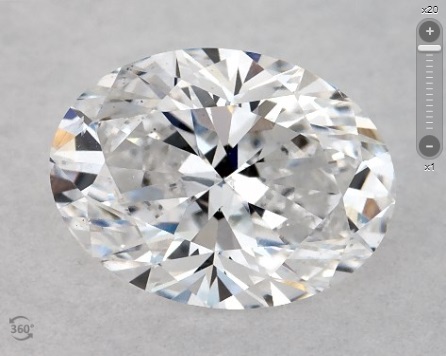
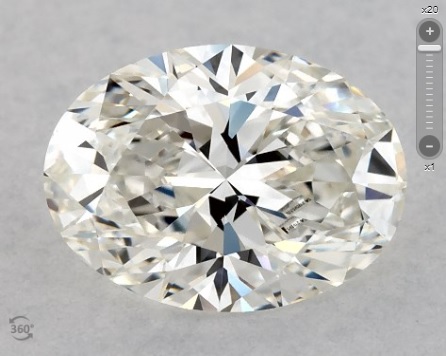

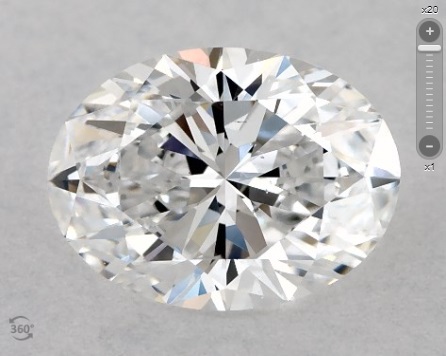

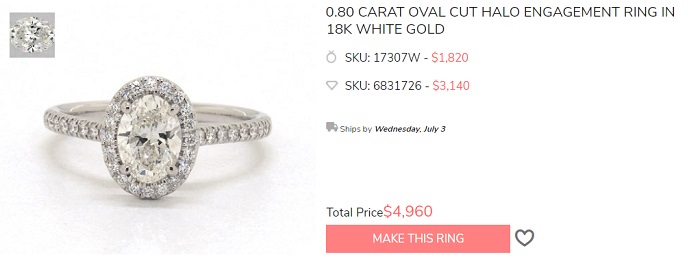
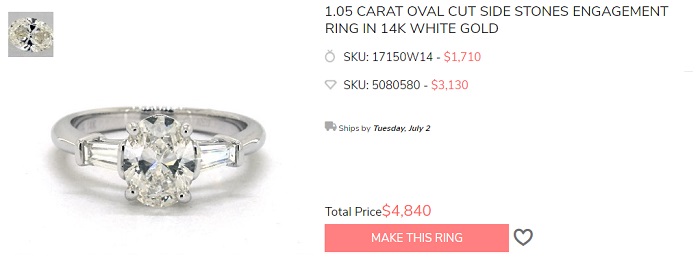

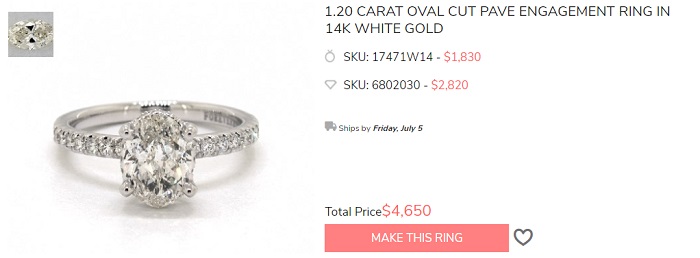
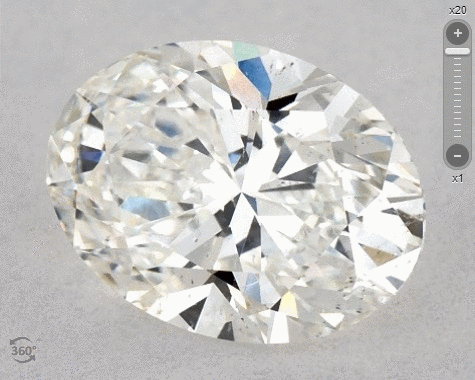
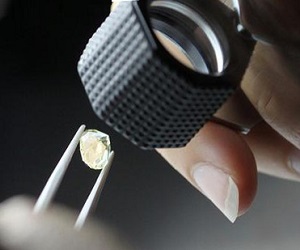












9 Comments
Dear Sir/ Madam,
A friend in Africa has 3 blue diamonds but they seem a bit rare according to the blue diamond stones. I would like to send you some photos of the diamonds so you can tell me if they are some of those you would buy if i transported them and how much the pricing for them. Too bad i do not have where to attach the photos here
Dear Paul,
Your website is the best website on the internet with respect to diamonds, it’s unparalleled. I can’t believe I almost bought an engagement ring for my girlfriend before reading all of this useful information.
After reviewing your website, going to jewelry stores to check the engagement rings (Cartier, Tiffany’s, etc) and visiting jamesallen.com, I think I have found a good diamond.
https://www.jamesallen.com/loose-diamonds/oval-cut/2.02-carat-i-color-vs2-clarity-sku-1883230
This one has a 54% table, 63.70% depth, and very good symmetry. The only problem is that the girdle is thick-very thick.
Also, even though it has only VS2 clarity, i think it looks good.
Could you please let me know what do you think.
Best,
Guillermo
Hi Paul,
I’m curious to know more about your thoughts on depth % in the oval cut. Most general guidelines say 58-62% for an excellent cut whereas you’re recommending 62-64%. Generally I trust your very informed recommendations but this part confuses me now in my search for the perfectly cut oval diamond :)
All the best,
Medina
…of course I meant to write you recommend 62-66% as per the table above…
Don’t get hung up by numbers. I have specifically stated that very clearly in my write up below the proportions table. What matters most is getting a video and an ASET to help you decipher shape appeal and performance.
Hi,
Love your website. In this article you say, “you need to go beyond a grading certificate and rely on visual data like videos or photographs.” Do you have an article that talks about what to look for in images of diamonds? I have a hard time knowing how an image, with its own lighting (either good or bad), will translate into brilliance when seeing it in person.
I find a diamond that looks good on certificate and looks good in an image, but have a hard time knowing if that’s because of lighting or something else. Basically, how do you trust an image of a diamond?
Thanks,
Robert
It comes with experience. For an oval diamond, the outline and overall appearance can easily be seen. Using the examples already listed in this article, you can see what are the things that raise a red flag with me and what are the things I look out for when buying a diamond.
Scintillation and performance are critical for ovals. Correlating them to the videos takes some experience and again, I’ve listed quite a number of GOOD examples too look out for. If the diamond has a dark ugly bowtie which is revealed by photographic data, then it just makes sense to ditch it and keep looking.
Dear Paul, I love your website and thanks a lot for what you do,
Is there any other website where i can buy a perfect lab oval diamond from 2ct to 3ct as james allen and blue nile don’t have cut grading and this is concerning me? is there a specific website you recommend for lab diamonds in particular.
thanks
For lab grown oval diamonds, I recommend James Allen for their selections and more importantly, their transparency in providing data on how the diamond looks like in real life.